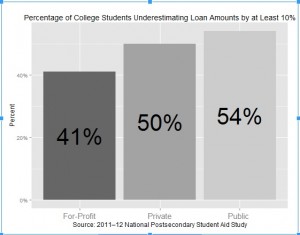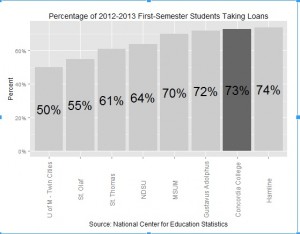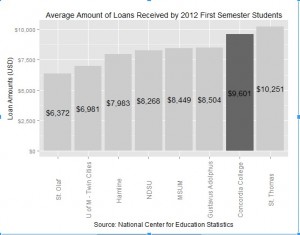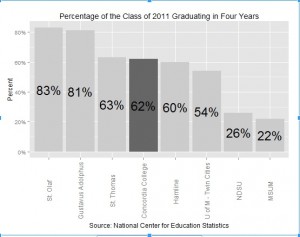Pop quiz: how much money do you have in outstanding student loan debt? If you’re anything like me, that question made you flinch. I want to talk about student loans this week. In particular, I want to highlight the report Are College Students Borrowing Blindly by Elizabeth J. Akers and Matthew M. Chingos, both of the Brookings Institution. Brookings released the report shortly before our last semester ended, but the results are still pertinent and alarming. The report highlights surveys conducted across the nation in which researchers asked current college students a version of the question I posed above: What is the total amount of money you borrowed in student loans for the 2011-2012 school year only (July 1, 2011-June 30, 2012)? So how did students do? Not as well as you’d hope.

Students think they’re borrowing less than they actually are. On the aggregate, more than half of American college students underestimate their loan debt by more than 10%. Among private colleges like Concordia, this percentage is only marginally lower (50%). First, let’s appreciate the gravity of this problem. If college students underestimate how much student loan debt we have, how can we be prepared for adulthood? Do we underestimate other forms of debt as well? Do we understand the sacrifices necessary to pay off the debt?
Let’s examine the state of student loans on a college-by-college basis. Below, I examine Concordia, local schools, and some of Concordia’s self-indicated peer schools. Some takeaways:
- Concordia is a regional leader in students using loans as a form of financial aid.
- Concordia is also a regional leader in the average amounts of loan aid
- Concordia’s four-year graduation rate is about average for the region
These graphs should indicate the relevance of Akers and Chingos’ results to Cobbers: student loan inaccuracies should alarm us as more of our students use loan aid and in larger amounts than students at other comparable schools.



Next, let’s talk solutions. What are our options? I see this as an “all hands on deck” situation. Loan regulating agencies should note that students appear to think they borrow less than they actually do. Perhaps this could influence pre-loan reading expectations or advisement. Meanwhile, colleges should begin conversations about outstanding student loans earlier. I know debt may not be as sexy of an issue as sustainability or service, but students need this consulting at least as much. Last but definitely not least, personal responsibility is also critical. (I probably owe my libertarian friends a beer for this one.) At the end of the day, college students are the primary agents with skin in this game. We shouldn’t have to guess about the magnitude of our outstanding debts – we should know them. Yes, we may have to dip our toes into the real world a bit early, but better that than borrowing blindly.

